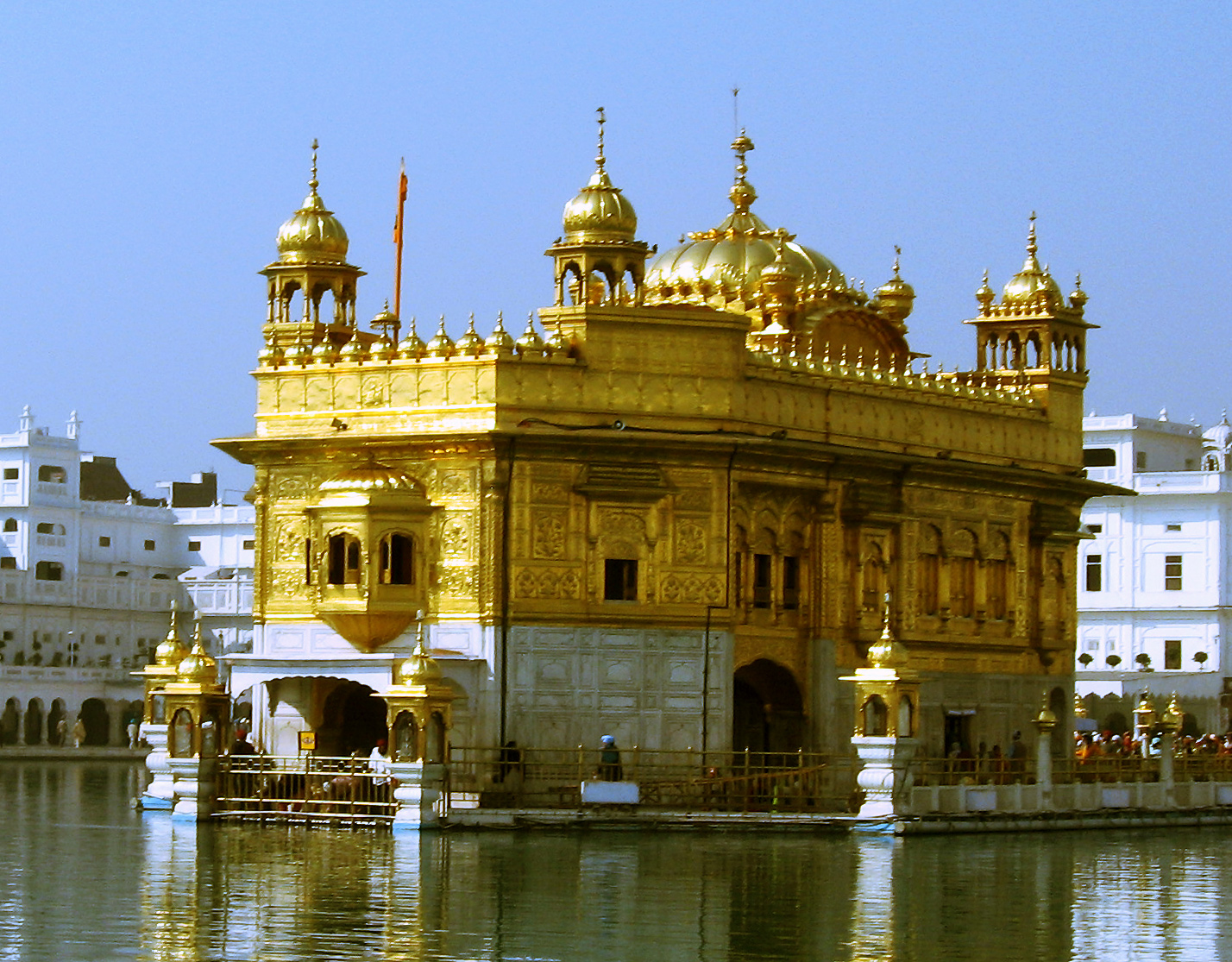Sri Harmandir Sahib, also known as Sri Darbar Sahib or Golden Temple, (on account of its scenic beauty and golden coating for English speaking world), is named after Hari(God) the temple of God. The Sikhs all over the world, daily wish to pay visit to Sri Amritsar and to pay obeisance at Sri Harmandir Sahib in their Ardas.
Guru Arjan Sahib, the Fifth Nanak, conceived the idea of creating a central place of worship for the Sikhs and he himself designed the architecture of Sri Harmandir Sahib.
Despite its great sacred status, the Golden Temple is open to visitors, like all Sikh temples.
The most famous and sacred part of the Golden Temple complex is the Hari Mandir (Divine Temple) or Darbar Sahib (Court of the Lord), which is the beautiful golden structure at the center of a large body of water. The gold-plated building features copper cupolas and white marble walls encrusted with precious stones arranged in decorative Islamic-style floral patterns. The structure is decorated inside and out with verses from the Granth Sahib (the Sikh holy book).
The water that surrounds the Hari Mandir is a sacred pool known as the Amrit Sarovar (Pool of Nectar). The temple is reached by following the Parikrama, which circumscribes the sacred pool in a clockwise direction. Connecting the pathway with the Hari Mandir is a marble causeway called the Guru's Bridge, which symbolizes the journey of the soul after death. The gateway to the bridge, the Darshani Deorhi, has magnificent silver doors.
Another major highlight of the Golden Temple complex is the Guru-ka-Langar, a dining hall where around 35,000 people a day are fed for free by temple volunteers. Everyone is invited to join this communal breaking of bread. All participants sit on the floor, regardless of caste, status, wealth or creed, powerfully symbolizing the central Sikh doctrine of the equality of all people.
Sri Harmandir Sahib, is built on a 67ft. square platform in the centre of the Sarovar(tank). The temple itself is 40.5ft. square. It has a door each on the East, West, North and South. The Darshani Deori (an arch) stands at the shore end of the causeway. The door frame of the arch is about 10ft in height and 8ft 6inches in breath. The door panes are decorated with artistic style. It opens on to the causeway or bridge that leads to the main building of Sri Harmandir Sahib. It is 202 feet in length and 21 feet in width.
Location-Amritsar,Punjab
Location-Amritsar,Punjab
Co ordinates- 31.620045° N, 74.876397° E
How to reach the destination:
Air :
Flights operate to the Rajasansi airport at Amritsar from many national destinations. A few international flights also land at the airport.
Rail :
Amritsar is well connected by railway network. Regular trains operate between Amritsar and national capital Delhi.
Road :
Buses are available to Amritsar from Delhi and other destinations of Punjab. Amritsar is at a distance of 234 kms from Chandigarh and 464 kms from Delhi.
Flights operate to the Rajasansi airport at Amritsar from many national destinations. A few international flights also land at the airport.
Rail :
Amritsar is well connected by railway network. Regular trains operate between Amritsar and national capital Delhi.
Road :
Buses are available to Amritsar from Delhi and other destinations of Punjab. Amritsar is at a distance of 234 kms from Chandigarh and 464 kms from Delhi.









